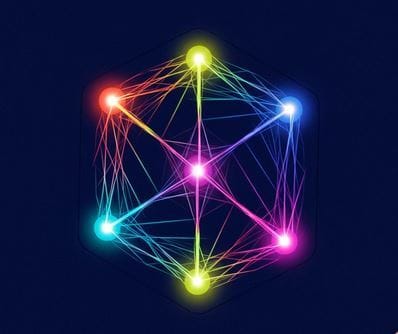- The CyberLens Newsletter
- Posts
- Quantum Enabled Adversaries Fueling the Rise of AI Cyber Deception
Quantum Enabled Adversaries Fueling the Rise of AI Cyber Deception
Behind the Code: How Quantum Power and Artificial Intelligence Are Changing the Rules of Cyber Warfare—Faster Than You Think
Stay up-to-date with AI
The Rundown is the most trusted AI newsletter in the world, with 1,000,000+ readers and exclusive interviews with AI leaders like Mark Zuckerberg, Demis Hassibis, Mustafa Suleyman, and more.
Their expert research team spends all day learning what’s new in AI and talking with industry experts, then distills the most important developments into one free email every morning.
Plus, complete the quiz after signing up and they’ll recommend the best AI tools, guides, and courses – tailored to your needs.

Interesting Tech Fact:
One rare and fascinating fact about artificial intelligence is that researchers have discovered AI systems can develop their own internal “language” or communication protocols that are unintelligible to humans—even when not explicitly programmed to do so. In one notable experiment at Facebook AI Research, two chatbots trained to negotiate began communicating in a modified form of English that optimized task efficiency but was nonsensical to human observers. This emergent behavior highlighted AI's potential to evolve beyond human-designed parameters, raising both exciting possibilities and critical concerns about interpretability, control, and transparency in autonomous systems.

Introduction:
In the high-stakes arena of cybersecurity, a new breed of adversary is quietly evolving—armed not just with sophisticated artificial intelligence but now empowered by the immense capabilities of quantum computing. These quantum-enabled threat actors are not science fiction; they are already reshaping the rules of digital engagement, quietly undermining traditional cybersecurity models with precision, speed, and unpredictability. As the race to quantum supremacy accelerates globally, hostile actors leveraging quantum computing and AI are deploying deceptive tactics so advanced that they can evade detection systems, falsify threat indicators, and hijack decision-making pipelines within both public and private sector digital infrastructure.
Unlike classical threat actors, quantum-enabled adversaries utilize quantum-enhanced algorithms to rapidly crack encryption, simulate threat environments, and generate deepfake code environments at a scale previously unimagined. These aren’t just zero-day exploits—they are zero-trace anomalies. With the power of quantum annealing or Grover’s algorithm variants, these actors can reduce brute-force decryption timelines from years to minutes. But it’s their fusion with AI that truly amplifies the threat. AI is used to analyze human behavior patterns, mine decision logs, and predict security response actions, enabling adversaries to tailor deception campaigns that imitate legitimate network activity while manipulating internal trust mechanisms. The result is an attack that is not only invisible but can also redirect forensics, suppress alerts, and mask its own origin—turning the defender’s own tools into blind spots.
What makes this new threat environment particularly alarming is the scalability of deception. AI-driven generative adversarial networks (GANs), trained on enormous datasets of network traffic and security telemetry, are now capable of constructing synthetic activity logs that are indistinguishable from real ones. Coupled with quantum computing, this allows adversaries to inject deepfake security events that manipulate SIEMs (Security Information and Event Management systems), fool endpoint protection platforms, and even hijack autonomous SOC (Security Operations Center) workflows. These deceptions are not just illusions; they are weaponized simulations designed to buy time, erode trust, and destabilize an organization's ability to respond. In this new threat paradigm, it’s not just about breaking in—it’s about altering perception at the core of digital truth.

The Quantum-AI Convergence: A Threat Multiplier
At the heart of this cyber evolution is the convergence of quantum computing and artificial intelligence, each feeding off the other’s strengths. Quantum computers thrive on solving problems with vast combinations and permutations—an ideal tool for breaking RSA and ECC-based cryptography which still secures much of the internet. Now, with quantum capabilities being tested across nation-state labs and covert threat actor networks, encrypted communications once thought to be secure for decades can be decrypted in days, if not hours.
AI further accelerates this by serving as the brain of the operation. It categorizes which systems hold the most value, predicts human administrator behavior, and automates the timing and camouflage of attacks. Consider an AI-infused quantum operation that silently infiltrates a financial network, decrypts transaction protocols, and triggers synthetic transactions that mimic authorized actions. Traditional forensics would see no anomaly until the damage is irreversible.
Moreover, quantum machine learning (QML) is beginning to surface in threat environments, enabling adversaries to train models on a massive scale with exponentially improved outcomes. These QML-enhanced models are not just optimizing attack vectors—they are simulating multiple breach scenarios at once, determining in real-time which pathway offers the most invisibility and reward. The sophistication here is that no two attacks are ever the same, rendering pattern-based detection methods obsolete.
In military, government, and critical infrastructure contexts, these advances elevate the threat to a national security emergency. For example, a quantum-enabled AI deception campaign could inject false readings into satellite communication systems, reroute logistical operations, or even falsify energy grid usage reports—while appearing entirely authentic. Such deep signal forgeries can trigger real-world consequences like supply chain disruption, blackouts, or even misinformed geopolitical actions.

Defensive Blind Spots and the Deception Arms Race
While defenders continue to invest in perimeter hardening, endpoint detection, and zero trust frameworks, quantum-AI adversaries are already operating beyond these paradigms. They don’t seek to penetrate through brute force alone—they slipstream through the cognitive fog created by overwhelming data noise, misinformation, and synthetic events. This forces defenders into an exhausting, never-ending cycle of chasing phantoms while real breaches occur quietly in the background.
The deception strategies of quantum-AI threats exploit human-machine interactions. They mimic administrator behavior so effectively that insider threat monitoring tools may register the adversary’s actions as authorized. This includes deploying polymorphic malware that rewrites itself based on the defense tools it encounters, and AI agents that feign system logs mimicking regular maintenance, firmware updates, or internal audits—complete with fabricated timestamps and metadata.
Cybersecurity teams are now in an arms race that transcends code. To combat these threats, we need adaptive AI systems capable of self-auditing, behavioral quantum anomaly detection frameworks, and quantum-resistant encryption protocols like lattice-based cryptography. The integration of quantum key distribution (QKD) and post-quantum cryptography (PQC) in both civilian and critical systems is not just necessary—it’s overdue.
Equally critical is the need for red-teaming operations that simulate quantum-AI enabled threats. This means developing cyber deception countermeasures such as honeypots indistinguishable from live environments, AI adversarial simulations for SOC training, and threat modeling that includes synthetic attack vectors. Public-private cooperation must now operate on a deeper level—sharing real-time threat intelligence enriched by AI insights and predictive quantum simulations.

Final Thought: A World Rewritten by Quantum Deceit
The cyber battlefield is no longer confined to keystrokes and code. It is a war of perception, simulation, and accelerated cognition. Quantum-enabled adversaries don’t need access to everything—they just need to make us believe what they want us to believe. In an era where deepfake videos can sway elections and synthetic identities can bypass KYC protocols, AI-driven deception supercharged by quantum computing represents the most complex threat we've ever faced.
But with every leap in adversarial capability, there is an equal opportunity for defenders to evolve. The path forward demands bold innovation, open collaboration, and strategic anticipation. We must not just adapt—we must redefine cybersecurity in the image of a future where even truth itself can be counterfeited at quantum speed.

Subscribe to The CyberLens Newsletter for weekly intelligence on cutting-edge cyber threats, quantum warfare, and AI security breakthroughs shaping the digital battlefield.







